
Skinks on the edge
A grand skink cuts a handsome figure in its Otago homeland, but its prospects-like those of all New Zealand’s skinks-are not so attractive. Once abundant on our shores,reptiles are now hard pressed by the twin evils of predation and habitat loss. But the fightback has begun, raising hopes that these sleek, sinuous creatures may return to their haunts of old.
Fog lay in a shroud across the craggy Central Otago landscape. For two days we had hunted for our quarry in vain; a thick “pea souper” had blanketed the entire search area. By the third morning we had almost abandoned hope of finding anything among the rock stacks that loomed out of the murk like the ruins of ancient castles. Then, abruptly, the sun burst through. At once, from under every rock, small, dark heads poked out into the light, followed by long, serpentine bodies. Alert eyes peered at us as the animals, the biggest of which were nearly the length of my forearm, flattened themselves against the rocks to absorb the welcome rays. These were the creatures we sought: Otago skinks, one of New Zealand’s most spectacular lizards. They had been there all along, concealed in the crevices. Now their slick, mottled bodies were almost abundant on the rocks around us.
Skinks and geckos are the only two lizard families found in New Zealand. Both boast numerous species and are well represented around the globe—in contrast to our most famous reptile, the tuatara, which perches in majestic isolation on the taxonomic tree and is confined to just a few offshore islands.
In many ways, skinks are the archetypal lizards. They have a long, smooth body covered in shiny scales, which are laid down in overlapping rows as on a fish, giving the animal a sleek appearance. Although they lack the ornamentation, such as neck frills and dorsal spines, that marks some of their flashier relatives, skinks are among the most successful of lizards, with about 1000 species distributed throughout the world. They tend to frequent tropical and subtropical regions, but are more cold-tolerant than many other lizards. They are particularly plentiful in Africa, southern Asia and Australia, and are scattered widely across the Pacific. They are also present, though in lesser numbers, in Europe and the Americas.
Precisely how they came to be in New Zealand is a mystery. Skinks are hardy creatures, and may have rafted to these shores on drifting clumps of vegetation—they are renowned for their colonising ability. However, estimates of rates of genetic change indicate that divergence between some New Zealand species could have occurred as long ago as 35 million years, and because New Zealand and New Caledonia were connected by dry land until long after this time, skinks need not have arrived here by sea at all. Alternatively, they may have a history here rivalling that of the tuatara, native frogs and other Gondwanan inhabitants, and been occupants before the country’s separation from the supercontinent about 80 million years ago.

Whatever their means of arrival, once in prehistoric New Zealand skinks appear to have flourished, and as a result almost every major type of habitat on the main islands now has its associated skink species: garden, seashore, forest floor, canopy, tussock, scree and subalpine. New Zealand lacks true alpine skinks, although roving animals have been found at altitudes of up to 1800 m. Skinks are absent from the Kermadec Islands and the subantarctic islands, but they do inhabit the Three Kings and the Chatham Islands.
Secretive in habit and quick to dart away if disturbed, skinks are mostly ground dwellers, living in leaf litter, under fallen branches and logs, among the roots of shrubs and trees, beneath stones and boulders, amid piles of seaweed and other detritus above the high-tide mark, and inside the cracks and crevices of rocks.
They turn up in the most unlikely places, as I once found in Fiordland. It was the middle of winter, and hail pelted me as I strolled along the beach at Disappointment Cove, on Resolution Island, looking for Fiordland skinks. I dug with numb hands in the stony shore, only to see the animals I was after—skinks that had been lying dormant under the top layer of rubble until I had disturbed them—squirm through the rocks just ahead of my grasping fingers.
These remarkable lizards inhabit two spots on the mainland and numerous bleak islands along the Fiordland coast. It is difficult to imagine anything larger than a limpet surviving on some of these sea-swept islets, which are swamped by the frequent southern storms.
Landcare Research herpetologist Bruce Thomas recalls watching such a storm pound Wairaki Island: “Wairaki is full of cracks and crevices—ideal skink habitat—but it’s only about 20 m high. We were standing on neighbouring Breaksea Island, watching the breakers crash over it. A couple of waves rolled across the rocky headland without cresting. The suction must have been tremendous, and I thought of the skinks in their hiding places trying to hold on under the swirling water. After the storm the island was a mess—piles of bull kelp all through the vegetation on top. But the moment the sun shone, lizards popped out all over the place.”
Unlike most skinks, Fiordland skinks bask communally-30 or more animals may pile on top of one other in a slinky pyramid. When startled, they scatter into nearby hiding places, and even take refuge in splash pools. If waves are a threat, they wedge themselves securely into their holes to avoid being washed away. Thomas believes it is the ability of these animals to survive immersion that has allowed them to colonise so many isolated islands.

Their dispersal ability was convincingly demonstrated in 1990. Two years earlier, Thomas led a team that eradicated Norway rats from 170 ha Breaksea Island. The rodents had decimated the populations of almost all ground-dwelling creatures larger than a spider, and Thomas intended restoring Fiordland skinks to the island once he was sure the rats had gone. But the lizards beat him to it.
“I’d always considered natural dispersal a possibility, because there was a stack about 50 m offshore that still harboured Fiordland skinks. I’d been monitoring the beach nearby both before and after we’d got rid of the rats, but the big surprise was being able to confirm recolonisation only two years after the poison campaign. Of course, because the skinks had come back on their own there was much more scientific merit in monitoring their progress from that point on than in releasing some up by the Breaksea but as I’d originally intended.”
[Chapter Break]
Almost as inhospitable as Fiordland’s rocky islands are the greywacke scree slopes of the central South Island high country. This arid, unstable environment has its resident lizard, the scree skink, a large animal with dark areas on its back which coalesce into thin, irregular black bands that extend down its sides, making it one of the most strikingly patterned of New Zealand’s skinks.
Many of the features it has in common with other skinks adapt it for life in its harsh surroundings. Its skin, flexible, yet with a tough outer layer of smooth scales, acts like chain-mail, protecting it from abrasions as well as minimising water loss through evaporation. Its eardrums are sunken into cavities in the side of the head, with narrow channels leading to them—a protection against dust and grit which could damage the delicate membranes. Its eyes have two lids, an upper and a lower. The upper is fixed, but the lower is movable and has a transparent “window,” allowing it to see with its eyes “wide shut”—likewise shielding them from dirt particles while burrowing or foraging. The scree skink also has particularly long toes, which allow it to move agilely across the shifting slopes.
Although this species has been found at relatively few sites, it could be very numerous, since greywacke screes cover a large area of the South Island. But as most screes are in remote areas, it will probably be many years before the true size of the scree skink population is known.

from their crevice hideaways by the merest ray ofsun, Fiordland skinks are communal baskers, clambering over one another to form heaps of30 animals or more.
Not so with the Otago skink, the creature I was hunting that day among the leaden fog and looming outcrops. It is one of the most studied reptiles in the country and an altogether impressive animal—solidly built, weighing in at 35 g or more, and, at up to 124 mm SVL, the biggest skink on the mainland. (SVL stands for “snout to vent” and is the way skinks are usually sized, the vent being the combined genital and excretory opening on the underside at the base of the tail. A skink’s total length is a less useful measure to herpetologists, given that skinks can shed their tails, and a regrown tail is invariably shorter than the original. An undamaged tail can account for anything from 50 to 60 per cent of a skink’s overall length.)
Impressive it may be, but the animal has not fared well in recent times. Surveys in the 1980s showed that the Otago skink’s distribution had shrunk alarmingly. Whereas 100 years ago it was found throughout the dry schist country of Central Otago—two million hectares roughly bounded by Queenstown, Lindis, Palmerston and Lawrence—now it is present in less than 10 per cent of its former range. Almost certainly the decline is due to habitat degradation and destruction (mainly a result of agricultural development) and predation by introduced mammals and birds, with pest-control operations compounding the problem.
During one of the early surveys, in December 1983, a feral cat was killed when it made the mistake of searching an outcrop at the same time as our party. This wary, mangy beast bore little resemblance to the domestic animals we keep as pets, and we were dismayed to find that its stomach contained 14 skinks, all undigested and therefore presumably the result of just that morning’s hunting. Here was evidence that one cat could kill thousands of lizards a year—and cats are only one of a suite of introduced mammals that prey on skinks. Rats, mice, stoats, ferrets, weasels, pigs, hedgehogs and possibly dogs are all implicated in skink decline.

Otago skinks and the equally rare grand skink, which also inhabits the rocky outcrops of Otago’s tussock grassland, are hardly ever found in areas that have been intensively farmed. Firing tussock prior to sowing pasture probably incinerates many skinks, while survivors are forced to forage widely over ground with little or no cover, and are therefore at greater risk from predators.
[Sidebar-1]
It is likely that pest control has also had a major impact on Otago and grand skink numbers. Huge quantities of poisons have been spread across the Otago landscape over the last century in repeated efforts to control rabbits. Some have been administered in baits attractive to lizards, such as jam and molasses (our skinks seem to have quite a sweet tooth). Others may have affected invertebrates, resulting in secondary poisoning or the depletion of food resources. The introduction of the rabbit calicivirus, RCD, might therefore seem an improvement, as this method of pest control is specific to rabbits and should not have any effect on skinks. Unfortunately, the very effectiveness of RCD poses a threat. When rabbit numbers decline, predators such as cats, stoats and harriers turn to lizards as an alternative food source.
Such is the precarious position of Otago and grand skinks that the Department of Conservation has employed a herpetologist, Mandy Tocher, to work specifically on these species. According to Tocher, the populations she is studying do not appear to be declining, even in highly modified areas, so perhaps the skinks’ fortunes have reached their lowest ebb and can now only improve.
Although rare and endangered, both species can be encountered locally in considerable numbers, with as many as 200 animals per hectare. Otago skinks also appear to live in small family groups.
The factors that limit numbers or density are unclear; nor is it known how siblings recognise one another and avoid mating. But within families Otago skinks, like their Fiordland relatives, are gregarious ray-catchers, often clambering on top of one another in preference to sunbathing on their own.
[Chapter Break]
Skinks are mainly carnivorous, subsisting on a diet of invertebrates and even the occasional fellow skink. Some skinks are known to eat carrion; in particular, species that live near seabird colonies, such as egg-laying and shore skinks, scavenge partly digested fish regurgitated by overfull chicks and feeding parents. The prospect of a live meal can drive some skinks to considerable feats of physical exertion. Mandy Tocher has seen grand skinks leap off their rock ledges to snatch passing insects. “I once found a gecko that had skewered itself on a spaniard [spear-grass], also presumably in an airborne quest for sustenance,” she says. “Or maybe it’s simply the case that even lizards get depressed!”
Like all reptiles, a skink smells with its tongue, not its nostrils, constantly flicking it in and out while searching for prey. A skink’s teeth aren’t particularly well adapted for cutting or grinding, so it usually swallows its prey whole or in a few large chunks.
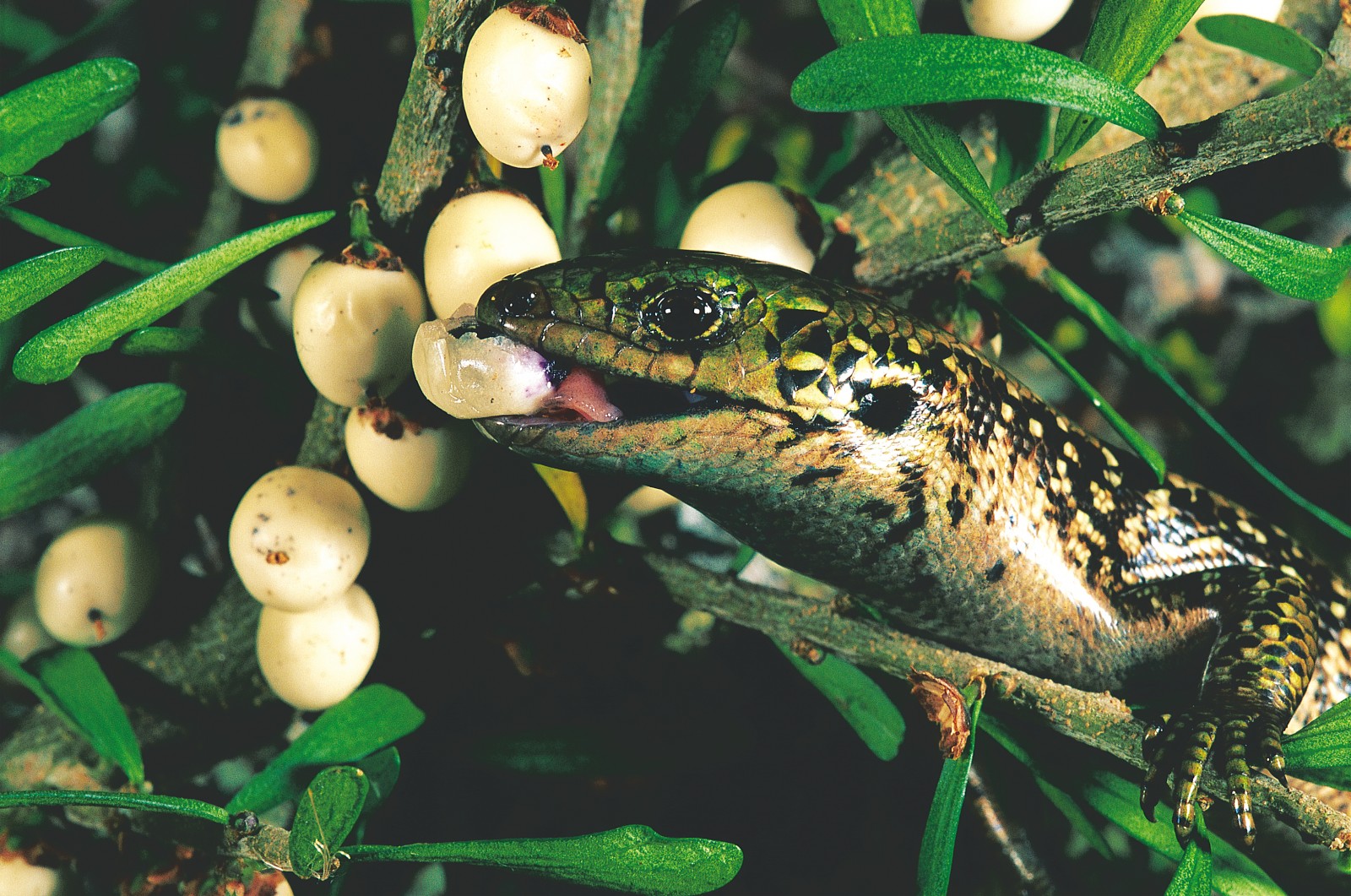
Despite their predilection for meat, most skinks supplement their diet with fruit and vegetable matter. For example, during summer as much as a third of the diet of the robust skink consists of fruit. There is now evidence that fruit is particularly important to the females of certain species, and may be necessary to maintain breeding condition. The world’s biggest skink, the giant skink of the Solomon Islands (which can reach a total length of over 700 mm), is completely vegetarian.
While small fruits, such as coprosma berries, are swallowed whole, skinks eat only the ripe portions of larger fruits. The elongate kawakawa berry ripens from the top, and skinks have been seen to scale the smooth, vertical stems of the kawakawa 1.5 m above the ground and clamber about nibbling the soft pulp only where they find it edible. On occasions when they have encountered a berry that is ripe all over, shore skinks have been seen to break it off the plant and fall with it to the ground.
It also appears some plants rely on skinks rather than birds to disperse their seeds, an idea first proposed by Nelson herpetologist Tony Whitaker after many years of accumulating evidence. Typical of the sites he surveyed was Macraes Flat, where, in 1986, he noted that porcupine shrubs, snowberry plants and pohuehue vines were stripped of all their ripe fruit where they grew on outcrops inhabited by grand skinks, while plants on nearby outcrops without skinks were untouched. To clinch the matter, the skinks’ droppings were crammed with seeds of the same plants.
Fruits favoured by skinks commonly grow on divaricating shrubs or densely tangled vines, where they are all but inaccessible to birds, and are often white or nearly colourless, in contrast to the red or orange berries usually attractive to birds. A good example is the porcupine shrub Melitytus alpina, which has white fruit beneath a network of hard spiny twigs. Unlike a bird, a skink can move relatively easily through this botanical maze and so get at the berries.

The present density of skinks over most of the country is so low it is hard to imagine they could be significant seed dispersers. However, populations used to be much larger and more extensive. On mammal-free island refuges, where skinks flourish, one can see how numerous lizards in primeval New Zealand might have been, and thus appreciate the major role they could have played in seed dispersal.
Palaeoecologist Trevor Worthy is in no doubt New Zealand was once as alive with reptiles as it was with birds: “If you go to predator-free islands like Breaksea and Maud, in places there’s a skink every 20 cm or so, and there’s no reason to think that much of the mainland wouldn’t once have been the same.”
In limestone caves throughout the country, the fossil record clearly hints at a time when the ground was awriggle with lizards. In one 40 m stretch of underground passage at Waitomo, Worthy found the remains of 43 animals—half of them lizards, half frogs. Finds in other parts of the country—the Far North, Hawkes Bay, Nelson, Canterbury, Otago and Southland—paint a similar picture. “Of course, there would have been bird predators, such as weka, takahe, falcons and owls, but these would never have been in the same densities as rodents are today,” says Worthy.
[Chapter Break]
Most of the world’s skinks lay eggs, but all New Zealand skinks, except one, give birth to live young. Scientists think this may be a cool-climate adaptation. There is a tendency for snakes and lizards living in climates such as New Zealand’s to be live-bearers, while those in warmer regions are egg-layers. The disadvantage of laying eggs in a cool climate is that once they have been abandoned to the environment they are subject to the vagaries of the weather, and the temperature can drop so low that development is inhibited. By contrast, offspring nurtured in the mother’s body enjoy a higher, more stable temperature because skinks are adept at keeping their body temperature above that of the air around them. In warm climates, the advantage is with the egg-layer: with little danger to its eggs from the environment, the female can devote its energies to further breeding.
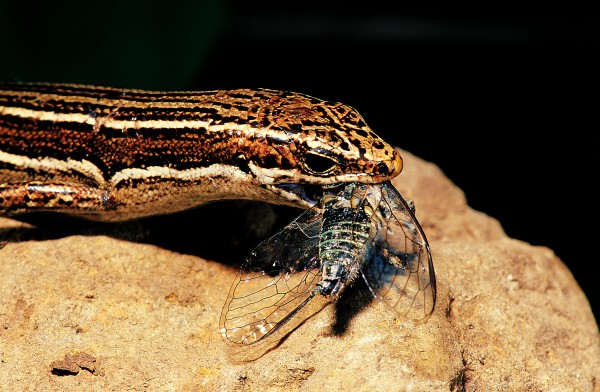
The egg-laying skink is not only New Zealand’s sole native oviparous lizard but also the only Oligosoma species that is primarily nocturnal. It lives on many islands off the north-east coast and in a few North Island coastal localities. Why it should be New Zealand’s only egg-layer is a puzzle, but it is surely no coincidence that it is confined to areas where the weather is mildest and, furthermore, to beaches, where climatic extremes are less pronounced than inland. Eggs are laid in scrapes in sand, silt or gravel under large stones. They are oval, about the size of a jelly bean, and have a tough, parchment-like shell. During incubation, they absorb moisture from their surroundings and swell, so that by the time they hatch they may have increased in size by a third. Eggs are laid in summer, usually three or four per female, and hatch in autumn.
There is one other skink in New Zealand that lays eggs, but it is not a native. The rainbow skink is an Australian immigrant that probably reached Auckland in freight in the 1960s and spread from there in a similar fashion. It is currently restricted to the North Island, and is found in Auckland, Waikato, the Coromandel Peninsula and the Bay of Plenty. A number of other exotic lizard species have been reported in New Zealand, but the rainbow skink appears to be the only one that has become established.
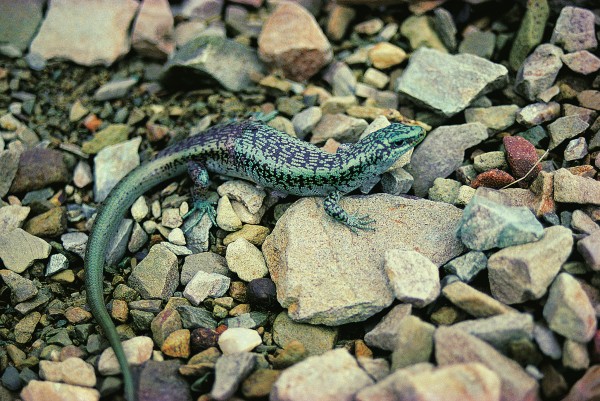
normal activities. This scree skink has a gleaming new livery, but has yet to exfoliate its tail and hind- quarters.
As well as adopting live birth in preference to egg-laying, lizards have had to adapt in other ways to New Zealand’s cool winters, particularly in the South Island. When I was studying skinks in the Rock and Pillar Range in Central Otago, I observed a marked difference in skink abundance between summer and winter. In the summer skinks were always underfoot among the tussock. In winter the ground was carpeted with snow for many months, but even when it wasn’t, the same areas seemed to be completely skink-free. It was clear that the animals were wintering somewhere out of the reach of frost and snow, but I did not determine where until a colleague, Graeme Bremner, began working on tussock insects. To extract insects, he dug up clumps of tussock and placed them upside-down in a heat extractor, which warmed the roots and drove the insects down onto a collecting tray. The patter of falling insects was often interrupted by the thump of a skink, particularly from tussock dug up in winter. The lizards were lying dormant in the roots, protected to some degree from the winter chill. They also shelter in other nooks and crannies, such as rabbit burrows, as Bremner relates: “One winter I took the roof off a burrow with my spade while I was planting trees near Milton, to find a number of skinks huddled together in a sort of ball 30 cm down.”
[Sidebar-2]
Some New Zealand skinks, such as Fiordland skinks, are extremely cold-resistant, and Wellington lizard-breeder Dennis Keall describes how a couple of scree skinks he was keeping in captivity froze rigid one winter—”like pencils.” It took over a year, but he eventually nursed them back to health.
In winter little food is available, and low temperatures mean lizards have difficulty metabolising what they do eat. In preparation, they build up fat stores in the tail and other parts of the body during the warmer seasons; even so, they are usually emaciated by the time spring rolls round.
Many people have had the alarming experience of seeing a skink suddenly part company with its tail, which continues writhing while the truncated owner makes its escape. All skinks can shed their tails in this way, and do so when they sense they are in grave danger of becoming somebody’s meal. There is a fracture plane of cartilage or connective tissue across the centre of most skink tail vertebrae, and by means of powerful opposing contractions of the muscles on either side of this, a vertebra and the surrounding skin, nerves and blood vessels are all cleanly broken. The twitching tail remnant distracts the predator while the lizard escapes.
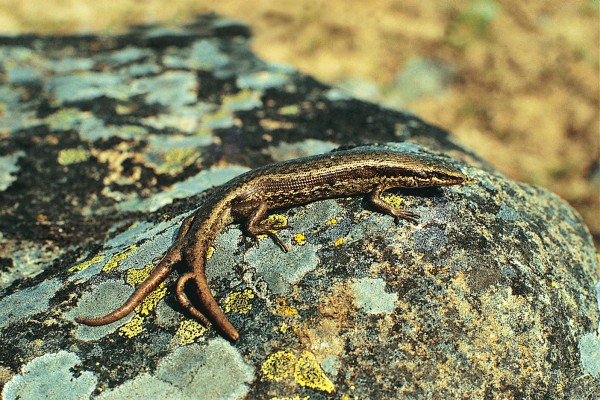
The stump heals quickly and the lost portion regrows, although with a slightly different colour and pattern. This regrowth is supported internally by a cartilage rod without fracture planes, so any further breaks must be made closer to the base of the tail. Occasionally lizards are found with forked or even three-pronged tails. These form when the tail has been shed through being damaged (by being crushed, for example, or chewed in a fight), or when a damaged portion is not completely severed.
Purposely sacrificing a major appendage to escape an enemy is clearly an extreme course of action. To lose an important fat repository just before winter can spell disaster for a skink, and there is also evidence that a lizard of reduced size comes lower down the pecking order. Shedding its tail is therefore a skink’s last resort.
[Chapter Break]
Considering the size and significance of New Zealand’s reptile fauna, it is perhaps surprising that lizards, and skinks in particular, have a generally low profile in the public imagination, and that not one museum in the country employs a full-time herpetologist. Part of the problem may be a pervasive sense of distaste for reptiles: terms such as “cold-blooded” and “scaly” carry negative connotations, and no one would be flattered by being described as a “miserable reptile,” much less a “snake in the grass.”
Skinks are all completely harmless to humans, being neither venomous nor able to inflict serious damage with their teeth. They are rarely aggressive towards humans, but can be quite territorial towards one another, and don’t easily tolerate intruders on their favourite basking site. As a result, they often have scars, particularly about the head and neck, and the loss of toes and part of the tail is not unusual.
Apprehensiveness around reptiles is not just a European eccentricity. Maori mythology credits geckos and tuatara with extraordinary powers, and both were regarded with fear and awe—green geckos, their chattering vocalisations disturbingly similar to laughter, were especially dreaded—but there is no evidence of Maori aversion to skinks.

While some people may find lizards disconcerting, even scary, lizards, in fact, have every reason to fear people. The arrival in New Zealand of humans and their mammalian hangers-on has been an unmitigated disaster for all native reptiles. Almost every introduced furry predator snacks on skinks, while some, like the feline feaster we caught in Otago, make them the main course. Because they have infested mainland New Zealand longer than other exotic mammals, rats have done the greatest damage. They are almost certainly responsible for the fact that just under half of New Zealand’s known skink species—four Cyclodina and eight Oligosoma species—are now confined in the wild to offshore islands free of rats.
- A proficient swimmer, the egg-laying skink will also enter rock pools in search of crustaceans or to escape danger. During the day, this habitually nocturnal animal is usually found hiding in crevices or beneath piles ofseaweed.
Fossil remains clearly show some island-bound skinks were once widespread on the mainland, while at least one species has become extinct. Department of Conservation herpetologist David Towns says the upper North Island once had as many as 10 species of skink living side by side, more than half of which have disappeared from the region.
Thanks to the efforts of a number of herpetologists, our skinks’ fortunes may finally be turning. One of the places where the prehuman status quo is being restored is the Mercury Islands, 6 km off the Coromandel Peninsula. Seven named islands, ranging in area from 3 ha to 1860 ha, and a number of smaller unnamed islets have become the site of an ambitious project involving the transfer of skinks from islands naturally free of introduced predators to islands from which pests have been removed.
“The rare Whitaker’s skink and the robust skink have been the main focus of the relocations, with the result that the future of these species is probably brighter now than at any time in the past 1000 years,” says Towns. “I say that because mammalian predators first entered their habitat between 1000 and 2000 years ago, starting a massive decline in their range. This has now bottomed out, and the animals are expanding into new habitats, even if their range is still small.”

The prospects for mainland skink species are hazy at best. It remains unclear whether their numbers are declining, stable or increasing. The rare striped skink is a good case in point. Of medium size—up to 76 mm SVLthis species is attractively marked with a copper-brown stripe flecked with fawn down its back and a broad pale-brown stripe along each side. In 1969, Tony Whitaker and Bruce Thomas found specimens at Douglas, in Taranaki, and its range is now known to extend from there, through the King Country and Rotorua region, to the Kaipara and Great and Little Barrier Islands.
Since striped skinks were most frequently found in rotting logs—either on the forest floor or in areas cleared of forest Whitaker speculated they might be arboreal, like many small skinks in other parts of the world. Over the 1970s and 1980s, circumstantial evidence mounted in support of this theory: foresters in the central North Island reported seeing striped skinks on or near newly felled trees, and Wellington ecologist Mike Meads collected two specimens from epiphytes low on a spreading mahoe tree. Whitaker suggested the best way to learn more was to check the crowns of trees immediately after they had been cut down.
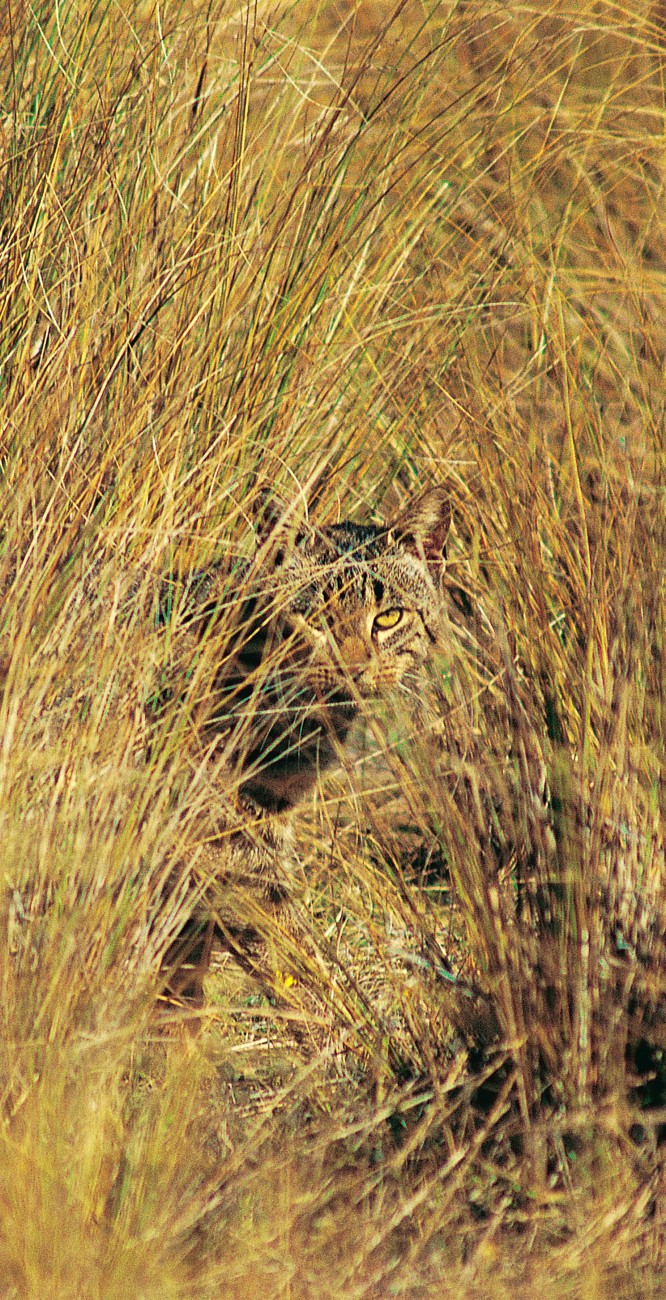
In 1994, an opportunity presented itself. A King Country land-owner at Waitaanga, with a permit to clear-fell tawa forest, allowed DoC to inspect the trees as soon as they had hit the ground. Sure enough, towards the end of a long day without so much as a glimpse of a lizard, a member of the DoC team spotted a shiny tail slipping beneath a thick mat of epiphytic orchids and ferns encircling a limb on a tree felled just moments before. Within seconds he had caught the animal and was elated to find it was an adult female striped skink. The epiphytes, in the crown of the tree, had been about 22 m above the ground, and appeared to be the only place in the tree the skink could have been living.
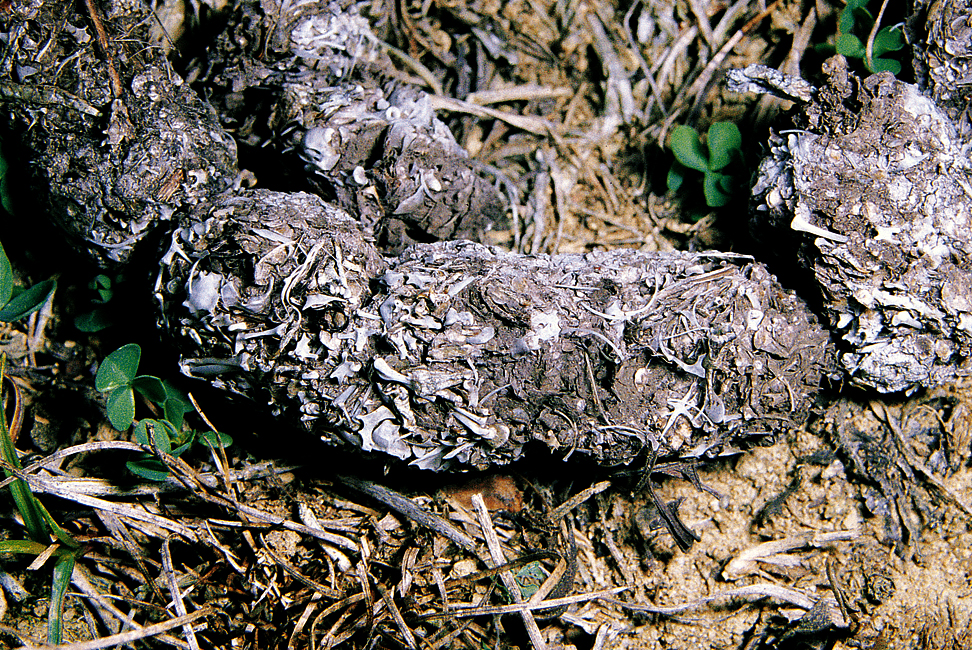
By 1996, all indigenous New Zealand reptiles and amphibians were fully protected by law, marking the end of a long campaign by conservation groups and lizard enthusiasts to have the animals’ plight recognised. The new rules do not prevent people from keeping lizards in captivity, but now anyone with a lizard of any description has to be registered with DoC. Many New Zealanders keep geckos and skinks as pets, if the membership of the New Zealand Herpetological Society (NZHS) is any guide. The NZHS was set up in the early 1970s as a scientific group, but gradually became a lizard-keepers’ society. In the 1980s, a new scientific organisation, the Society for Research on Amphibians and Reptiles in New Zealand (SRARNZ), was created to cater for professional herpetologists.
Skinks are not difficult to keep in capt T. I remember rescuing skin caught by our pet cat when I was growing up in Gore. I kept them in a child’s bathtub until their wounds had healed, then threw them over the garden fence into the paddock, where our cat no doubt found them once more.

Lizard-fancying children sometimes grow up into adults like Dennis Keall, who has had 30 years’ experience of breeding skinks and geckos. Most of his section in Wainuiomata is given over to his lizard collection, one of the largest in the country. A dozen custom-built cages house an equal number of species, including some of New Zealand’s rarest. He feeds his small skinks caterpillars, moths and flies, while the larger ones enjoy a more varied diet, including fruit. In his stud books, Keall records which animals have bred with one another, identifying individuals by skin colour and pattern.How does he sex them, I asked?
“It’s very difficult when the animals are young,” he explained, “but as they grow older their body proportions change, so it becomes easier. The best way, though, is just to put two skinks together and see if anything happens.”
I suspect he is playing down his expertise, for Keall has bred hundreds of lizards over the years, many of which have been farmed out to institutions such as zoos. Some of his skinks have lived a surprisingly long time: one Otago skink recently died after 27 years in captivity—and it was already an adult when caught in the wild. Keall has noticed differences in behaviour from one species to another. Some, such as Otago and scree skinks, show considerable curiosity. They come to their cage doors for food, and seem to enjoy being handled.
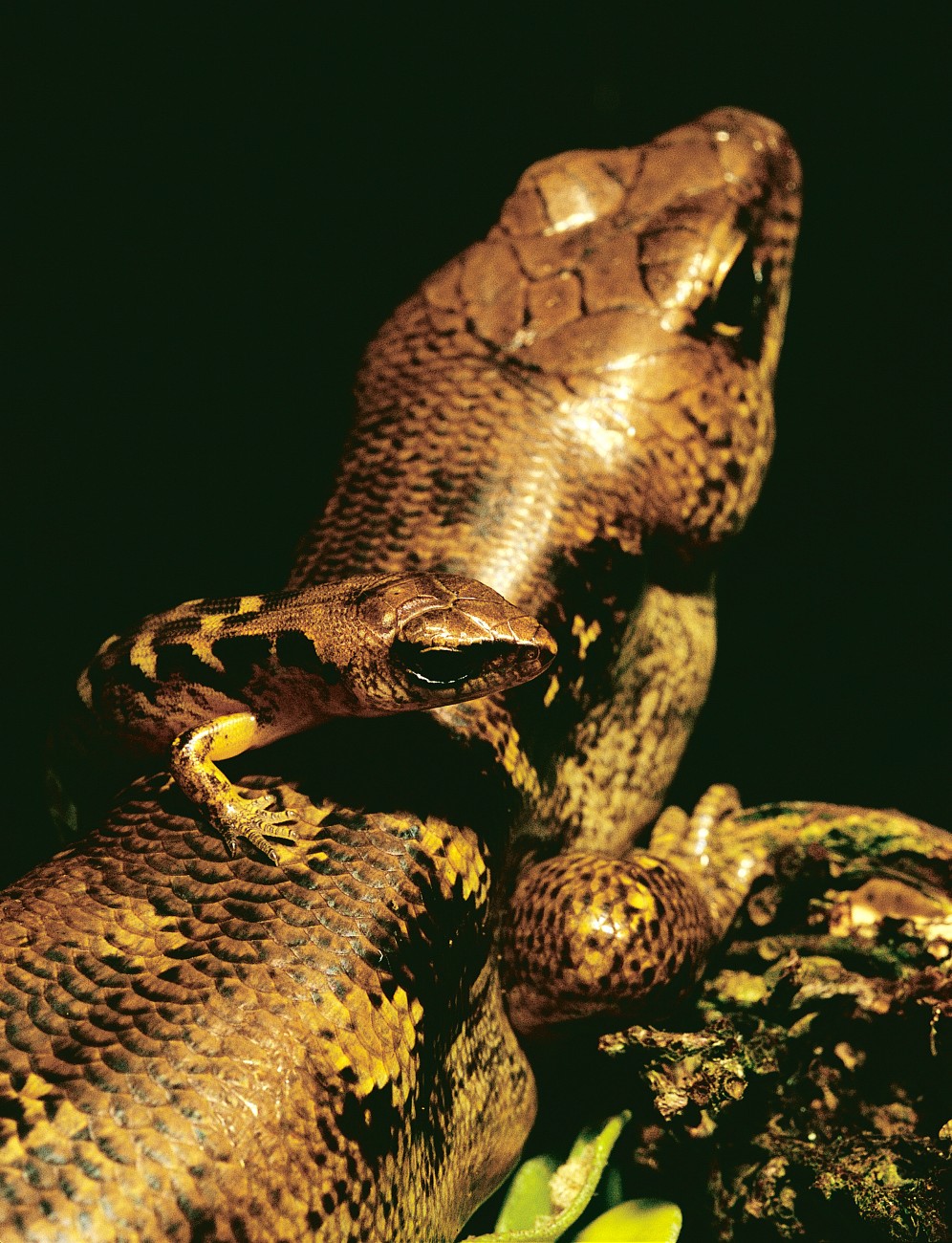
Keall would like to see more effort made to reintroduce mainland species, such as Otago skinks, to areas where members of the public could easily view them in the wild. David Towns agrees. Having had such success with interisland transfers, his long-term goal is to bring species currently confined to islands back to the mainland.
This will not be easy, however. The places chosen for such a project will need to be protected in perpetuity, since the skinks will need to be permanently safeguarded against the predators that eliminated them in the first place. Fortunately, DoC’s growing expertise in predator control makes this a very real possibility. The process of local extinctions and range contractions brought about by human beings might finally be reversed, and some of the glories of the country’s reptilian past restored in places where they are accessible to everyone.






















